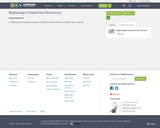
A Powerpoint to help guide students through the early settlement of English North America
- Subject:
- U.S. History
- Material Type:
- Lesson Plan
- Author:
- Link Graham
- Date Added:
- 04/08/2018

A Powerpoint to help guide students through the early settlement of English North America
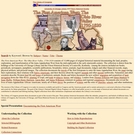
This site consists of letters, journals, books, newspapers, maps, and images documenting the land, peoples, and exploration of the trans-Appalachian West. The first European travelers, their relations with Native Americans, new settlers' migration and acquisition of land, navigation down the Ohio River, planting of crops, trade in tobacco and horses, and the roles of African Americans, women, churches, and schools are documented.
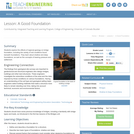
Students explore the effects of regional geology on bridge foundation, including the variety of soil conditions found beneath foundations. They learn about shallow and deep foundations, as well as the concepts of bearing pressure and settlement.
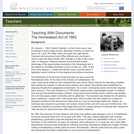
This lesson recounts efforts to improve homesteading laws and make land ownership possible for more settlers. The distribution of government lands had been an issue since the Revolutionary War. Preemption -- settling the land first and paying for it later -- became national policy; however, supporting legislation was stymied until the secession of Southern states. See one of the first applications for land under this law. Teaching activities are included.
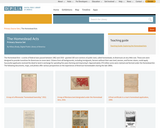
This collection uses primary sources to explore the Homestead Acts. Digital Public Library of America Primary Source Sets are designed to help students develop their critical thinking skills and draw diverse material from libraries, archives, and museums across the United States. Each set includes an overview, ten to fifteen primary sources, links to related resources, and a teaching guide. These sets were created and reviewed by the teachers on the DPLA's Education Advisory Committee.

For Iowa History- Unit 1 PowerPoint video Learn about the Formation of Iowa's Soils and Why the Prairie land is Unique. • Video narrative written by Sandra Kessler Host...

For Iowa History- Learn about the First Inhabitants of Iowa• Video narrative written by Sandra Kessler Host researcher, author, and curator of the Iowa Rural...

For Iowa History- Learn about the Acquisition of Iowa Land Louisiana Purchase & Tribal Treaties• Video narrative written by Sandra Kessler Host researcher,...

Cases and Applications
Word Count: 117965
(Note: This resource's metadata has been created automatically by reformatting and/or combining the information that the author initially provided as part of a bulk import process.)

Students investigate the critical nature of foundations as they learn differences between shallow and deep foundations, including the concepts of bearing pressure and settlement. Using models representing a shallow foundation and a deep pile foundation, they test, see and feel the effects in a cardboard box test bed composed of layers of pebbles, soil and sand. They also make bearing pressure calculations and recommendations for which type of foundations to use in various engineering scenarios.
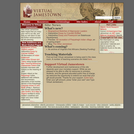
The Virtual Jamestown Archive is a digital research, teaching and learning project that explores the legacies of the Jamestown settlement and "the Virginia experiment." As a work in progress, Virtual Jamestown aims to shape the national dialogue on the occasion of the four hundred-year anniversary observance in 2007 of the founding of the Jamestown colony.

This selection of items from Mystic Seaport's archival collections includes logbooks, diaries, letters, business papers, and published narratives of voyages and travels. The unique maritime perspective of these materials offers a rich look at the events, culture, beliefs, and personal experiences associated with the settlement of California, Alaska, Hawaii, Texas, and the Pacific Northwest. A number of photographs, paintings, maps, and nautical charts are also included to illustrate the story of Americansäóť western seaborne travel. Various themes are touched upon, including whaling, life at sea, shipping, women at sea, and native populations.